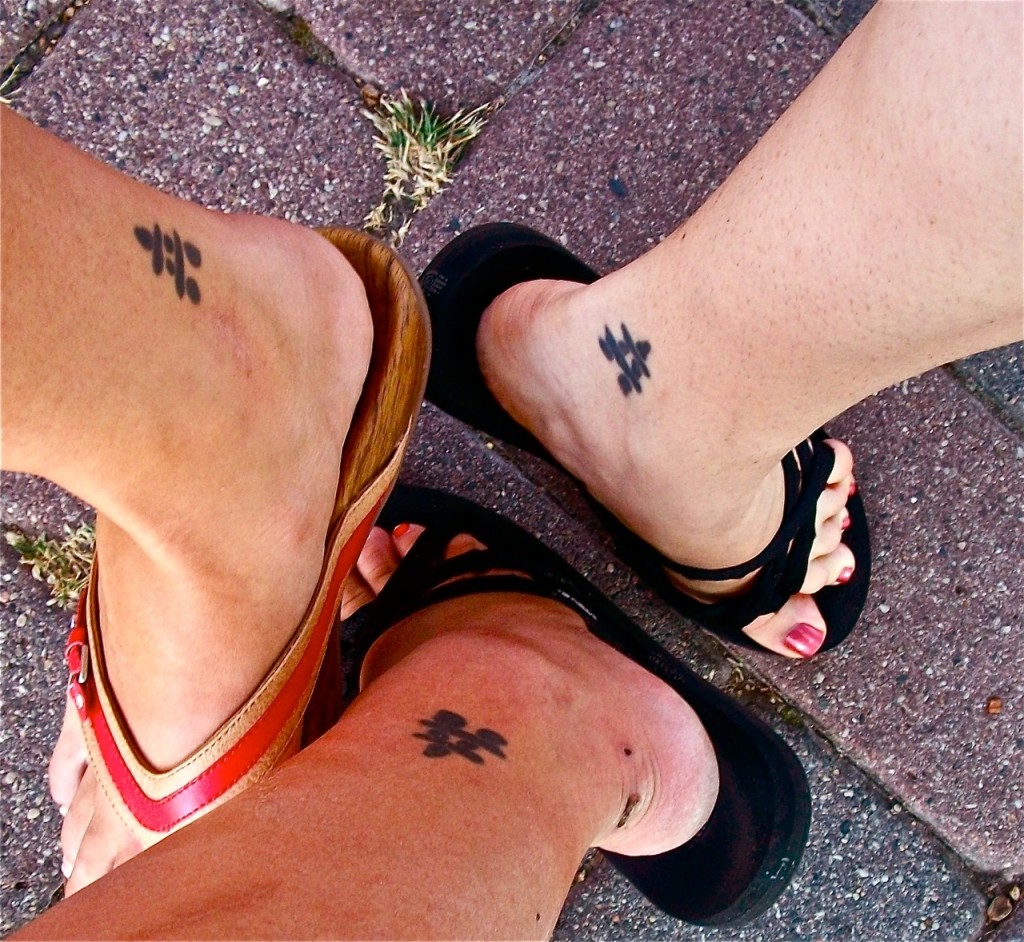A cairn tattoo is a pretty cool thing. I don’t have one but a friend of a friend does. When Lucie K was 18, she went on a six week long canoe trip in the Nunavut Territory of Canada. She was with six other girls her age and a trip leader. Here is her account of her trip.
We chose to travel on two different but connected river systems in Nunavut: the Kazan and the Kunwak. We were dropped via float plane, travelled over 500 miles and, aside from some musk oxen, and lots of caribou we didn’t see anyone but each other until the end of the trip. The trip ended in a small Inuit community called Baker Lake (on Baker Lake), which is just slightly Northwest of Hudson Bay.
The route we chose (particularly the Kunwak) was absolutely riddled with inuksuks. Before this trip I’d never heard of them, but in that stark, tree-less, tundra landscape they were absolutely stunning to come across. We all fell in love with them. Some were huge (much taller than any of us) which often had us hypothesizing about how the ancient Inuit had gotten the rocks stacked in such formations. Some were a little like Stonehenge to us in their mysteriousness.
After our trip I learned much more about them. I’d gone hiking in the SW many times with my family and knew that the Arctic cairns held a similar purpose as the ones down there, but it was still very fun to research them. I’ve now seen them explained and translated in a number of ways but my favorite is “Man of stone that guides the way.” They were used to mark bends in the rivers and even scare caribou down into river valleys for easier hunting.
Five out of seven of us got the tattoo. In true inuksuk form though they all turned out little differently. (No two inuksuks or cairns can ever be the same!) Nearly all of us got it on our ankles. I don’t think about it very often anymore but I guess that even more than 10 years later, I continue to like the idea that there is a little man of stone (appropriately tattooed very close to my foot) helping guide my way.


